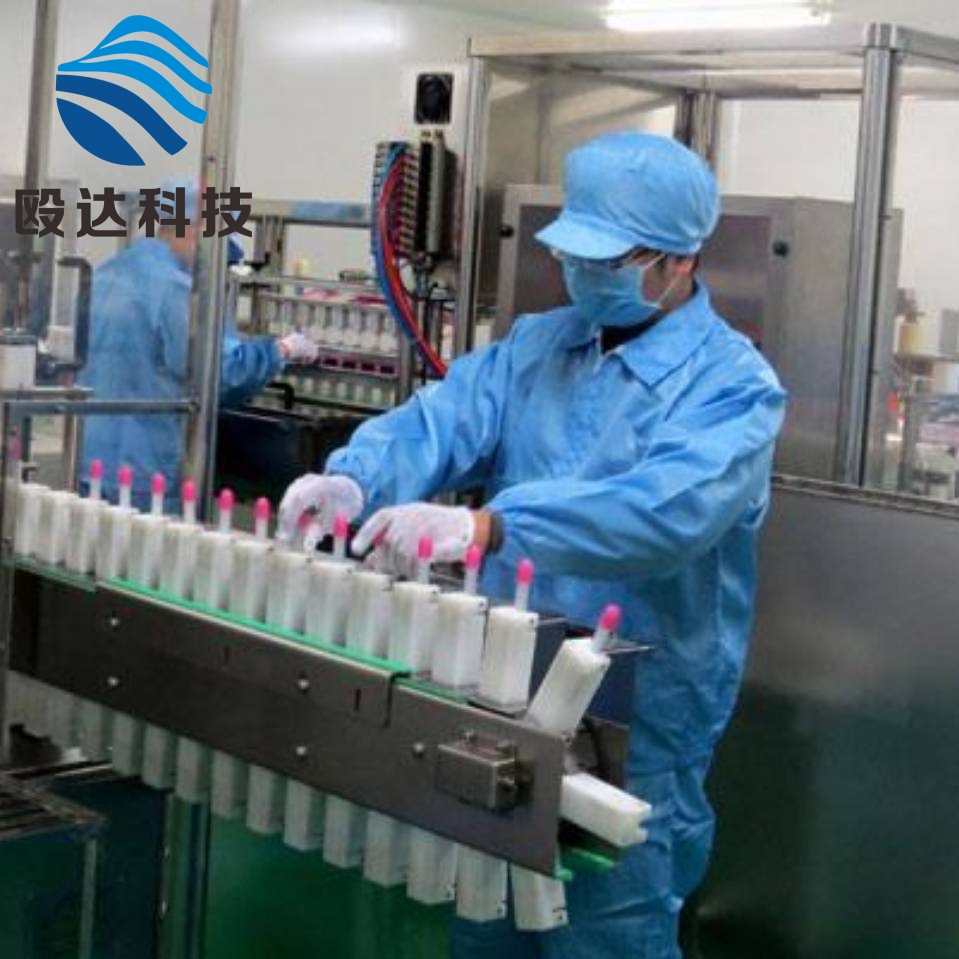-
Categories
-
Pharmaceutical Intermediates
-
Active Pharmaceutical Ingredients
-
Food Additives
- Industrial Coatings
- Agrochemicals
- Dyes and Pigments
- Surfactant
- Flavors and Fragrances
- Chemical Reagents
- Catalyst and Auxiliary
- Natural Products
- Inorganic Chemistry
-
Organic Chemistry
-
Biochemical Engineering
- Analytical Chemistry
- Cosmetic Ingredient
-
Pharmaceutical Intermediates
Promotion
ECHEMI Mall
Wholesale
Weekly Price
Exhibition
News
-
Trade Service
Influenza (influenza), referred to as the flu, is a disease that everyone has to face every year when the season changes.
According to statistics, about 3 to 5 million patients are seriously ill due to influenza every year, millions of patients are hospitalized, and 650,000 patients die.
At present, oseltamivir is still the dominant company in this treatment field.
On February 23, 2018, Shionogi's innovative anti-influenza drug Xofluza (baloxavir marboxil, formerly known as S-033188) was launched in Japan.
On October 24, 2018, the drug was approved by the FDA for listing in the United States, and Shiono Yoshitaka authorized Roche and Genentech to operate outside Japan.
Image source: Shionogi official website Xofluza's mechanism of action is completely different from that of oseltamivir on the market.
Xofluza is an innovative Cap-dependent endonuclease inhibitor and one of the few new drugs in the world that can inhibit the proliferation of influenza viruses.
It can target the key link of influenza virus replication and inhibit it from obtaining the CAP structure at the 5'end of host mRNA from host cells, thereby inhibiting the transcription of influenza virus itself.
Since there is no protease with a similar mechanism in the host cell, this drug theoretically will not affect the host cell.
Image source: Xofluza, Shionogi's official website, can kill the flu virus within 24 hours, but some symptoms may last longer.
The onset of oseltamivir usually takes 72 hours.
Clinically, oseltamivir needs to be taken twice a day for 5 days to treat influenza, and Xofluza can be taken in a single dose regardless of age.
All these research results indicate that Xofluza will become a blockbuster drug.
The existing baloxavir synthesis process is based on the following reverse synthesis analysis.
The initial synthesis process of compound 1-R reported by Shionogi Company has 10 steps, using morpholinone as the starting material, protecting by Alloc, reducing and methylating with DIBAL-H to obtain Intermediate 6.
Using pyrone 7 as a raw material, the intermediate 10 is obtained through a three-step reaction, which is then bonded with 6 to form the racemate 1.
The racemate 1 reacts with R-tetrahydrofuran-2-carboxylic acid to form two diastereomers, and the R configuration 1 is obtained after separation.
Although the dr value of this step is not clearly reported, the yield of intermediate 13A is 45%, and the yield of the final step of removing furan carboxylic acid is 90%.
The tricyclic structure of Intermediate 2 is shown in the figure below, with a total of 5 steps and a total yield of 71%.
The two intermediates reacted with each other to obtain intermediate 19 with a yield of 53%, but the dr value was not clearly reported.
When baloxavir carboxylic acid was obtained by debenzyl protection, they did not choose the commonly used Pd catalytic conditions but chose CH3CONMe2/LiCl.
The purpose is obviously to control heavy metal residues.
Finally, baloxavir and methyl chloromethyl carbonate form the prodrug baloxavir marboxil (Xofluza).
The main problems with this route are that the synthetic steps of 1-R are relatively long, the purification yield of diastereomers is low, and the diastereoselectivity of 1 and 2 is poor.
Shionogi Company announced an improvement to the above-mentioned synthesis method in a subsequent patent.
First, the preparation route of 1-R was shortened from 10 steps to 8 steps, and the total yield of 1-R was 21%.
In the improved process, the researchers found that the benzyl protecting group of 1-R has a significant impact on the dr value of the product when the benzyl protecting group of 1-R is replaced with other protecting groups, and the n-hexyl group is the preferred group.
Although an additional synthesis step is added, the 87% yield is acceptable.
Following the above research ideas, researchers at Shionogi Pharmaceutical Company further optimized the synthesis process.
On the one hand, the n-hexyl group was introduced in the early stage, and on the other hand, the introduction of the carboxyl group increased the chiral center.
During the preparation of 1-R analog 35, the dr value of the diastereomer reached 20:1, and the yield reached 75%.
There is also a shorter route for preparing compound 36 as shown in the figure below.
The dr value can reach 22:1, but the total yield of the two steps is only 16%.
Intermediate 36 has one more carboxyl group than intermediate 27.
The key intermediate 27 can be obtained by removing this carboxyl group.
The following two decarboxylation methods are currently disclosed.
The entire route increases the total yield of intermediate 37 from the original 20% to 38%.
It is not difficult to see that in the above process optimization process, shortening the synthesis steps and increasing the yield of expected diastereomers are the key to the entire process.
The author believes that more and better synthesis processes will be developed in the future, let us wait and see.
References 1.
Kawai, M.
; Tomita, K.
; Akiyama, T.
; Okano, A.
; Miyagawa, M.
; Yamauchi, H.
Substituted Polycyclic Pyridone Derivative and Prodrug Thereof, Int.
Patent Appl.
WO 2016/175224, Nov 3, 2016.
2.
Shibahara, S.
; Fukui, N.
; Maki, T.
; Anan, K.
; Samejima, M.
; Ochiai, K.
, Methodfor Producing Substituted Polycyclic Pyridone Derivative and Crystal of Same, Int.
Patent Appl .
WO2017/221869, Dec 28, 2017.
3.
Okamoto, K.
; Ueno, T.
; Hato, Y.
; Hakogi, T.
; Majima, S.
; Yamao, N.
; Ochiai, K.
Method for Stereoselectively Producing Substituted Polycyclic PyridoneDerivative, Int.
Patent Appl.
WO2019/070059, Apr 11, 2019.
4.
Kawai, M.
; Tomita, K.
; Akiyama, T.
; Okano, A.
; Miyagawa, M.
; Yamauchi, H.
; Sugita, K.
Substituted Polycyclic Pyridone Derivative and PharmaceuticalComposition Containing Prodrug Thereof, PCT Int.
Appl.
WO 2018/030463, Feb 15, 2018.
5.
Review of the Patent Literature: Synthesis and Final Forms of Antiviral DrugsTecovirimat and Baloxavir Marboxil.
David L.
Hughes.
Org.
Process Res.
Dev.
DOI: 10.
1021/acs.
oprd.
9b00144.
Yaodu APP ``Points New Game'' company enjoys Database super-value authority star drug-ibrutinib's tortuous road to market, one disease and one disease | The competitive landscape of clinical use of viral hepatitis C.
The influence of phosphate groups on the drug-readiness of the drug.
Unlock your handheld professional tools immediately
According to statistics, about 3 to 5 million patients are seriously ill due to influenza every year, millions of patients are hospitalized, and 650,000 patients die.
At present, oseltamivir is still the dominant company in this treatment field.
On February 23, 2018, Shionogi's innovative anti-influenza drug Xofluza (baloxavir marboxil, formerly known as S-033188) was launched in Japan.
On October 24, 2018, the drug was approved by the FDA for listing in the United States, and Shiono Yoshitaka authorized Roche and Genentech to operate outside Japan.
Image source: Shionogi official website Xofluza's mechanism of action is completely different from that of oseltamivir on the market.
Xofluza is an innovative Cap-dependent endonuclease inhibitor and one of the few new drugs in the world that can inhibit the proliferation of influenza viruses.
It can target the key link of influenza virus replication and inhibit it from obtaining the CAP structure at the 5'end of host mRNA from host cells, thereby inhibiting the transcription of influenza virus itself.
Since there is no protease with a similar mechanism in the host cell, this drug theoretically will not affect the host cell.
Image source: Xofluza, Shionogi's official website, can kill the flu virus within 24 hours, but some symptoms may last longer.
The onset of oseltamivir usually takes 72 hours.
Clinically, oseltamivir needs to be taken twice a day for 5 days to treat influenza, and Xofluza can be taken in a single dose regardless of age.
All these research results indicate that Xofluza will become a blockbuster drug.
The existing baloxavir synthesis process is based on the following reverse synthesis analysis.
The initial synthesis process of compound 1-R reported by Shionogi Company has 10 steps, using morpholinone as the starting material, protecting by Alloc, reducing and methylating with DIBAL-H to obtain Intermediate 6.
Using pyrone 7 as a raw material, the intermediate 10 is obtained through a three-step reaction, which is then bonded with 6 to form the racemate 1.
The racemate 1 reacts with R-tetrahydrofuran-2-carboxylic acid to form two diastereomers, and the R configuration 1 is obtained after separation.
Although the dr value of this step is not clearly reported, the yield of intermediate 13A is 45%, and the yield of the final step of removing furan carboxylic acid is 90%.
The tricyclic structure of Intermediate 2 is shown in the figure below, with a total of 5 steps and a total yield of 71%.
The two intermediates reacted with each other to obtain intermediate 19 with a yield of 53%, but the dr value was not clearly reported.
When baloxavir carboxylic acid was obtained by debenzyl protection, they did not choose the commonly used Pd catalytic conditions but chose CH3CONMe2/LiCl.
The purpose is obviously to control heavy metal residues.
Finally, baloxavir and methyl chloromethyl carbonate form the prodrug baloxavir marboxil (Xofluza).
The main problems with this route are that the synthetic steps of 1-R are relatively long, the purification yield of diastereomers is low, and the diastereoselectivity of 1 and 2 is poor.
Shionogi Company announced an improvement to the above-mentioned synthesis method in a subsequent patent.
First, the preparation route of 1-R was shortened from 10 steps to 8 steps, and the total yield of 1-R was 21%.
In the improved process, the researchers found that the benzyl protecting group of 1-R has a significant impact on the dr value of the product when the benzyl protecting group of 1-R is replaced with other protecting groups, and the n-hexyl group is the preferred group.
Although an additional synthesis step is added, the 87% yield is acceptable.
Following the above research ideas, researchers at Shionogi Pharmaceutical Company further optimized the synthesis process.
On the one hand, the n-hexyl group was introduced in the early stage, and on the other hand, the introduction of the carboxyl group increased the chiral center.
During the preparation of 1-R analog 35, the dr value of the diastereomer reached 20:1, and the yield reached 75%.
There is also a shorter route for preparing compound 36 as shown in the figure below.
The dr value can reach 22:1, but the total yield of the two steps is only 16%.
Intermediate 36 has one more carboxyl group than intermediate 27.
The key intermediate 27 can be obtained by removing this carboxyl group.
The following two decarboxylation methods are currently disclosed.
The entire route increases the total yield of intermediate 37 from the original 20% to 38%.
It is not difficult to see that in the above process optimization process, shortening the synthesis steps and increasing the yield of expected diastereomers are the key to the entire process.
The author believes that more and better synthesis processes will be developed in the future, let us wait and see.
References 1.
Kawai, M.
; Tomita, K.
; Akiyama, T.
; Okano, A.
; Miyagawa, M.
; Yamauchi, H.
Substituted Polycyclic Pyridone Derivative and Prodrug Thereof, Int.
Patent Appl.
WO 2016/175224, Nov 3, 2016.
2.
Shibahara, S.
; Fukui, N.
; Maki, T.
; Anan, K.
; Samejima, M.
; Ochiai, K.
, Methodfor Producing Substituted Polycyclic Pyridone Derivative and Crystal of Same, Int.
Patent Appl .
WO2017/221869, Dec 28, 2017.
3.
Okamoto, K.
; Ueno, T.
; Hato, Y.
; Hakogi, T.
; Majima, S.
; Yamao, N.
; Ochiai, K.
Method for Stereoselectively Producing Substituted Polycyclic PyridoneDerivative, Int.
Patent Appl.
WO2019/070059, Apr 11, 2019.
4.
Kawai, M.
; Tomita, K.
; Akiyama, T.
; Okano, A.
; Miyagawa, M.
; Yamauchi, H.
; Sugita, K.
Substituted Polycyclic Pyridone Derivative and PharmaceuticalComposition Containing Prodrug Thereof, PCT Int.
Appl.
WO 2018/030463, Feb 15, 2018.
5.
Review of the Patent Literature: Synthesis and Final Forms of Antiviral DrugsTecovirimat and Baloxavir Marboxil.
David L.
Hughes.
Org.
Process Res.
Dev.
DOI: 10.
1021/acs.
oprd.
9b00144.
Yaodu APP ``Points New Game'' company enjoys Database super-value authority star drug-ibrutinib's tortuous road to market, one disease and one disease | The competitive landscape of clinical use of viral hepatitis C.
The influence of phosphate groups on the drug-readiness of the drug.
Unlock your handheld professional tools immediately







